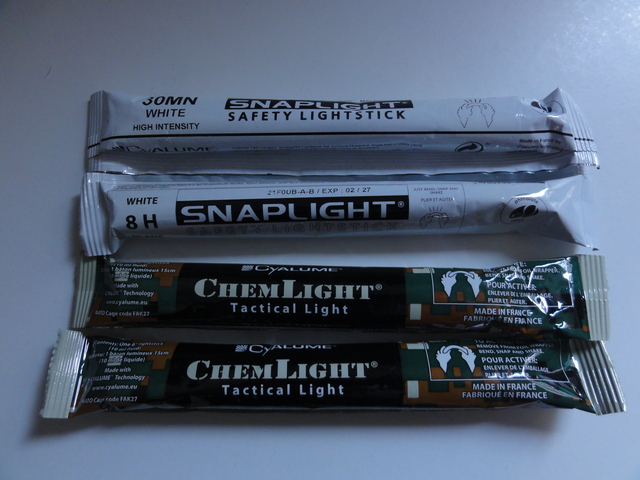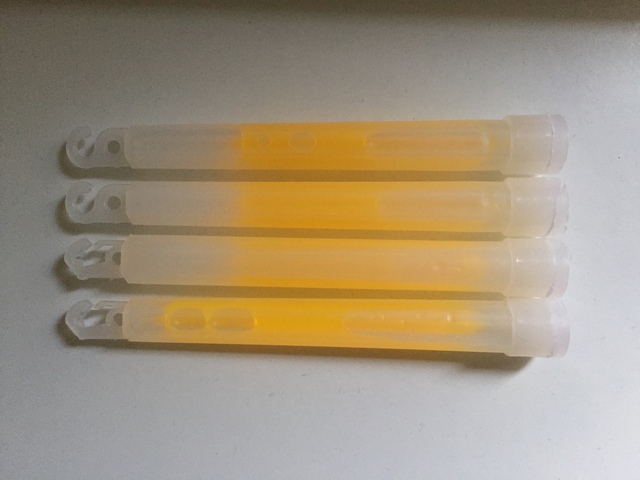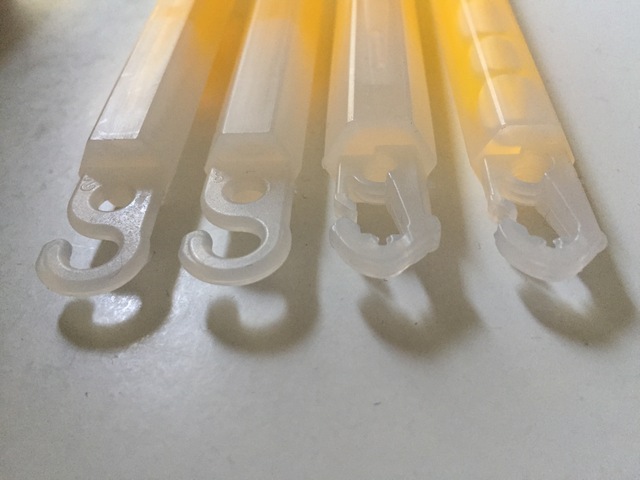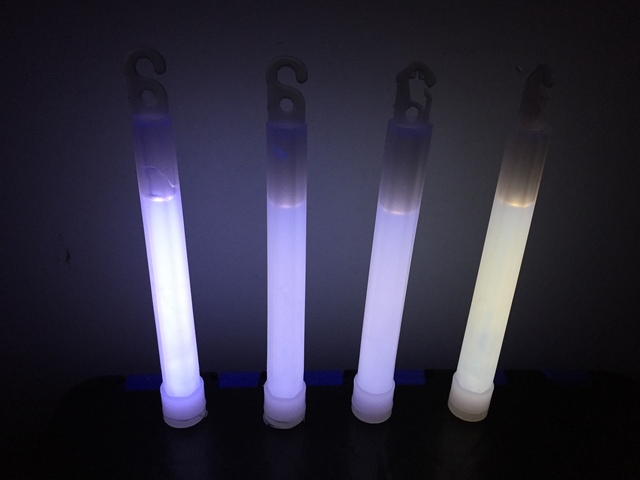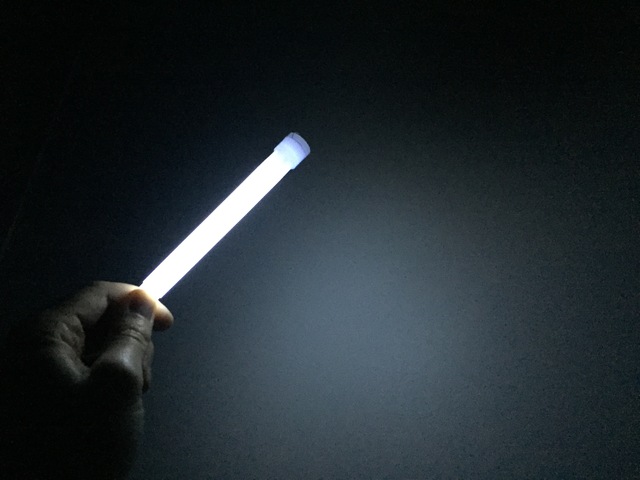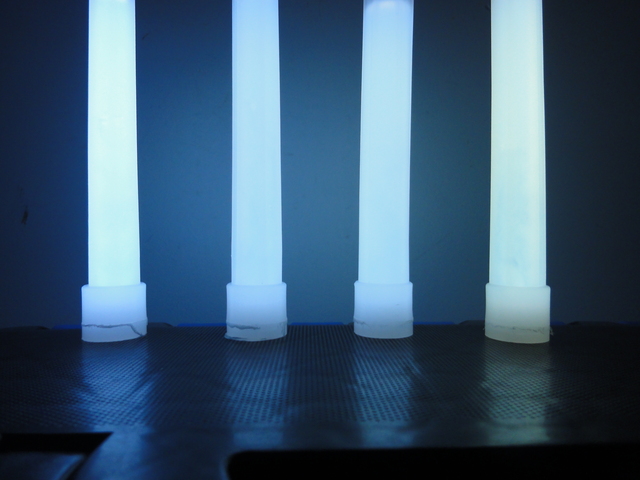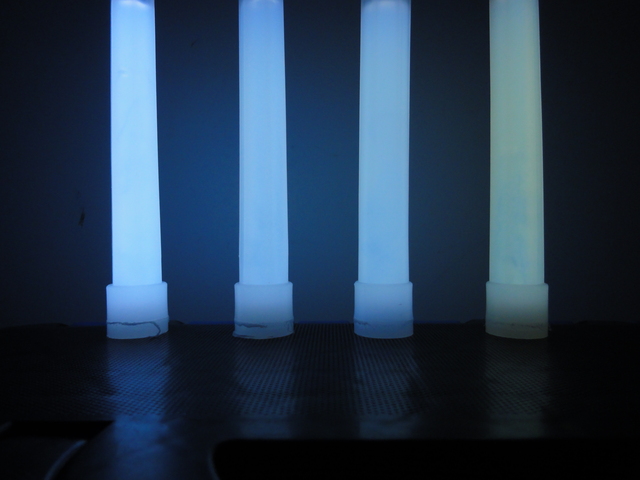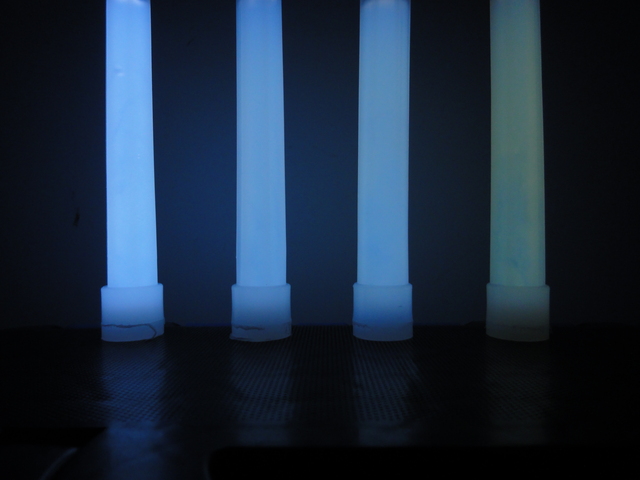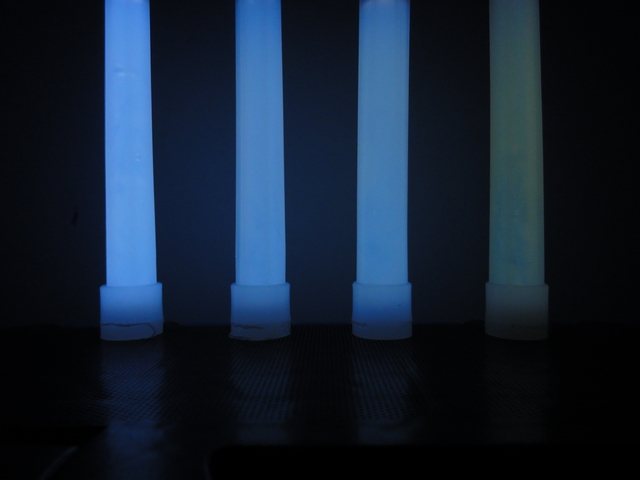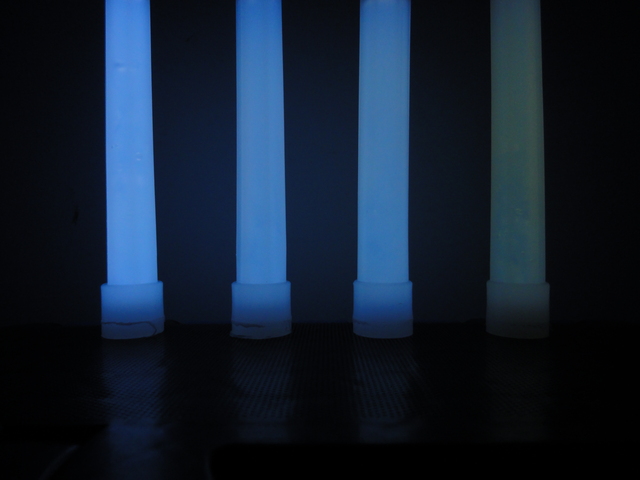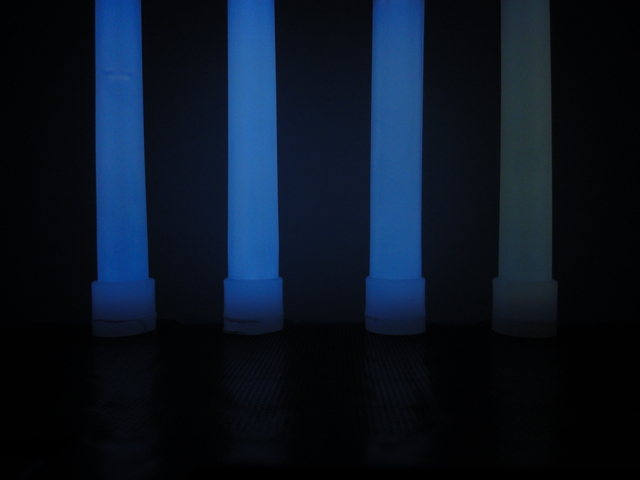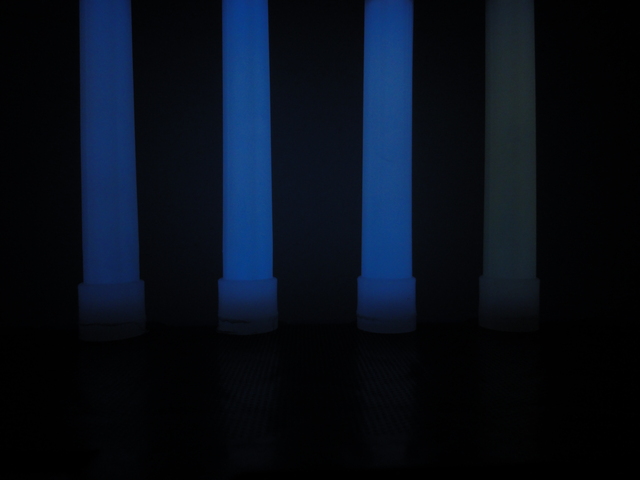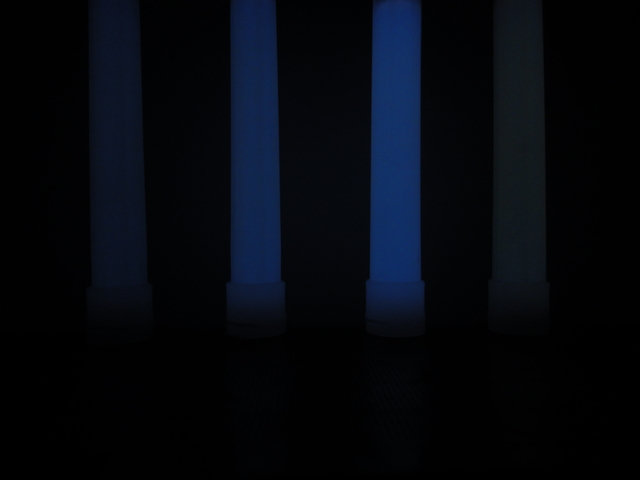Cyalume glow sticks test
There are plenty of ways to create light, one of them is chemiluminescence which is a chemical reaction emitting light. The most common usage is in glow sticks.
The interesting properties of glow sticks:
- they are waterproof;
- they don’t produce any heat, sparkles or gas;
- they are not flammable.
Those properties make them interesting for some specific usage (in flammable environments, at sea…).
Since I never used any before, I wanted to check them for the following usages:
- safer replacement for candles in case of power outage;
- lighting when hiking.
Brand selection
For the brand, Cyalume is kind of the obvious choice:
- the inventor of glow sticks;
- the only authorized provider for NATO;
- non-toxic (compared to most other brands);
- made in France (for the EMEA market).
Model selection
For the model, given the main usage would be to replace candles, I was looking for white light, so the choices are:
- SnapLight 30 minutes high intensity (21,48 € per pack of 10 glow sticks);
- SnapLight 8 hours (21,48 € per pack of 10 glow sticks);
- ChemLight 8 hours (23,52 € per pack of 10 glow sticks);
- ChemLight 24 hours (23,52 € per pack of 10 glow sticks).
SnapLight models are the “civilian” ones while the ChemLight models are the military ones.
So I bought a pack of each to compare them. Each glow stick is packaged in an individual sachet. The chemicals deteriorate with light so the sachet protects them from light, glow sticks must be taken out of their sachet only when they are going to be used (or to be placed in other light protecting containers).
Model comparison
From top to bottom and left to right here are SnapLight 30 minutes / SnapLight 8 hours / ChemLight 8 hours / ChemLight 24 hours:
There are few differences in the form factor:
- the hooks are more sturdy and less prone to unhook on the ChemLight models;
- the 24 hours model seems to contain more liquid;
- the ChemLight 8 hours is slightly thicker and rounder (less octogonal) than the others.
Just after being activated we can already see that the ChemLight 30 minutes High Intensity glows brighter than the others (the difference is more visible on the photo than in real life) but also that the ChemLight 24 hours glows yellower than the others. The others being a slightly blueish white. My first impression is that they don’t glow that bright. You can’t use them to light up a room (unless using a lot of them). They are more useful to “tag” objects/persons/path. If you need to read something you need to have the glow stick right next to what you want to read.
For the next few pictures, I put my camera on manual mode, so it won’t adjust the brightness automatically, and took pictures at several points in time (t0, +10 minutes, +35 minutes, +1h30, +2h, +6h, +8h30, +13h, +24h) to see the brightness evolution:
What we can see here is that:
- they all fade quickly at the beginning then more slowly;
- the SnapLight 30 minutes is still brighter than the others after 2 hours;
- The two 8 hours ones are quite similar in brightness, the ChemLight one fading a bit slower.
Based on that I would say that for a usage of a few hours, the SnapLight 30 minutes might be a good option. For longer usage, the 8 hours ones are the best choices. I’m not sure the ChemLight 24 hours has any advantage on the others.
I guess the time rating for each glow stick is a percentage of luminosity after a certain amount of time (i.e. the glow stick brightness is at least X % of the original brightness after Y hours (Y hours being the value on the package)).
Well, it would be nice if Cyalume provided those data (lumen, brightness evolution in time, etc.).

